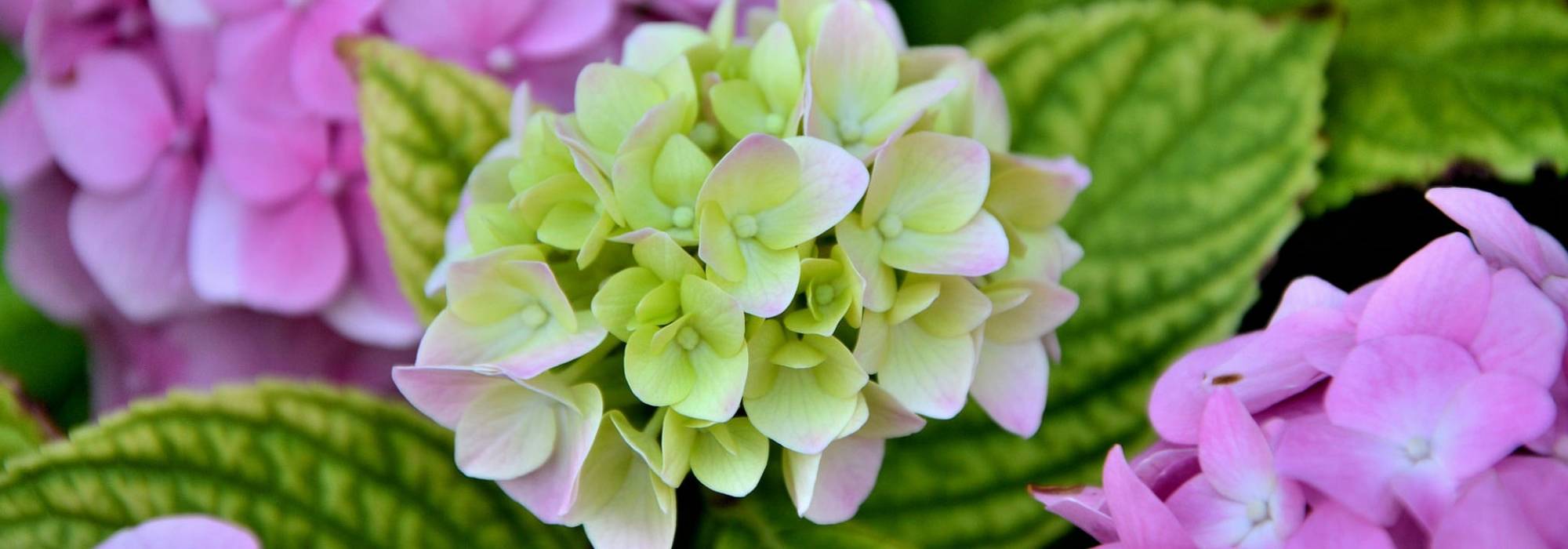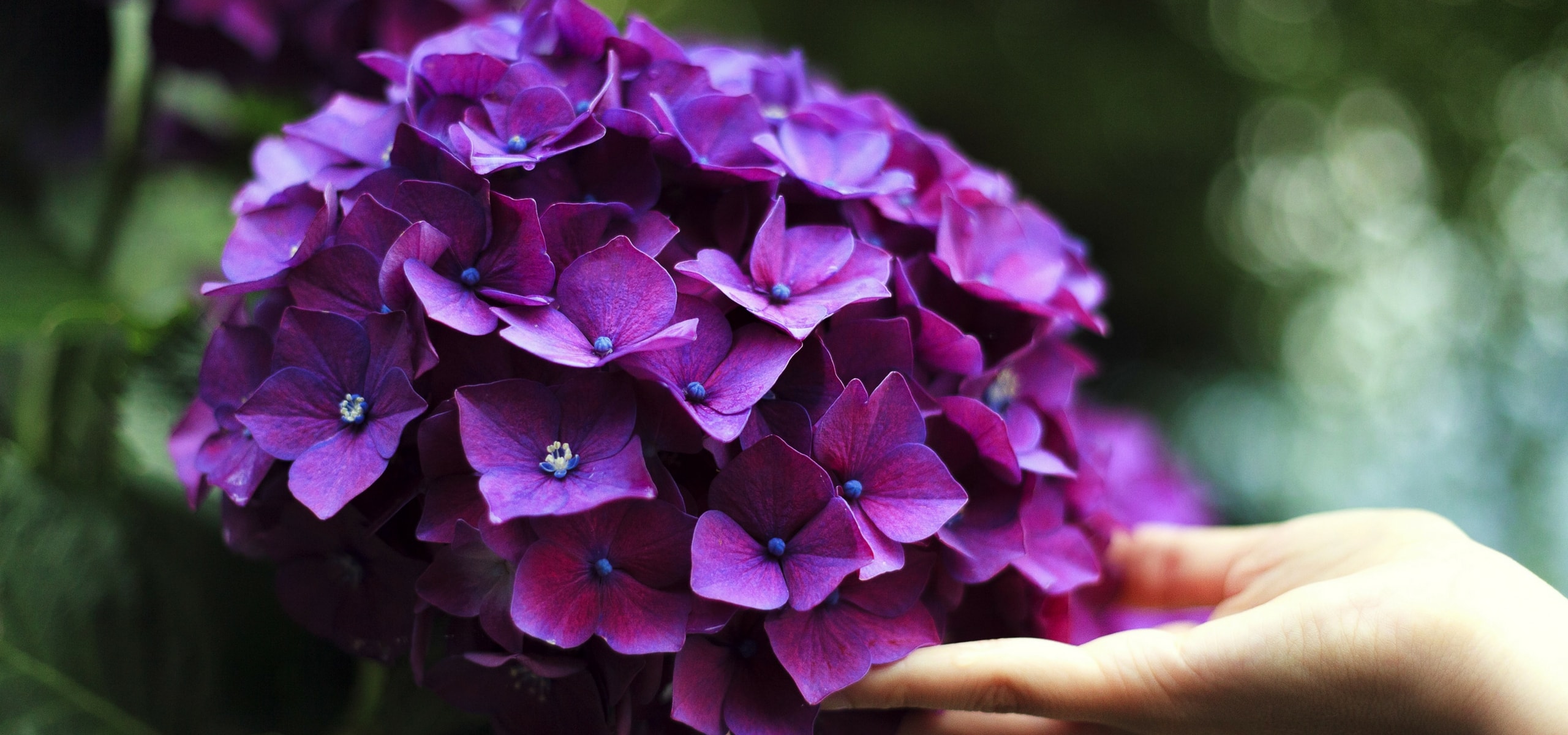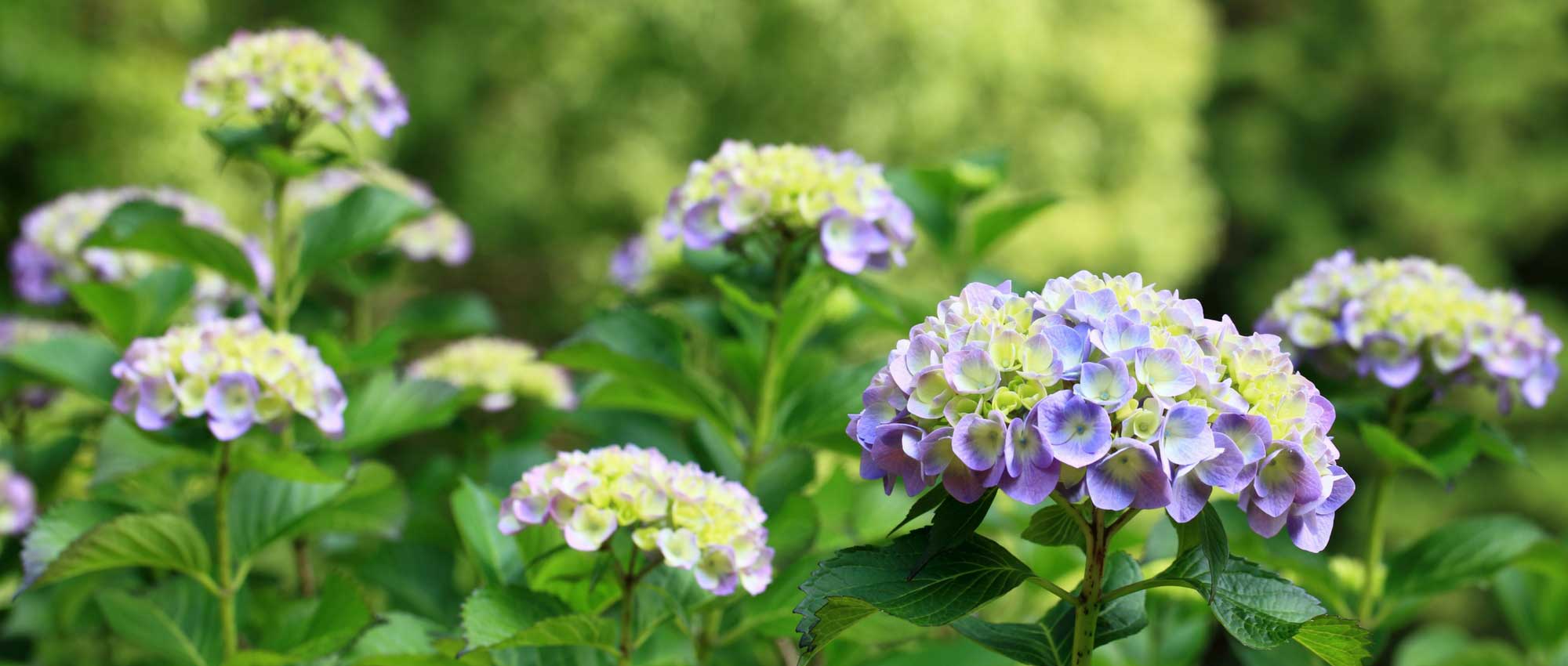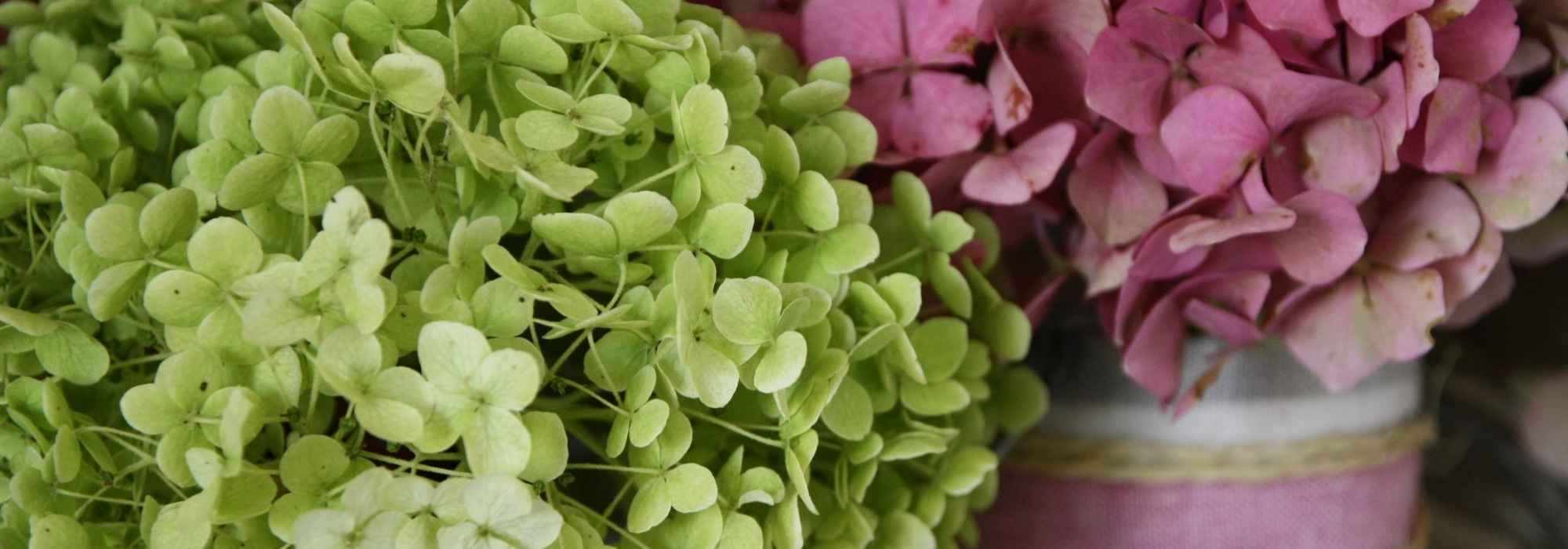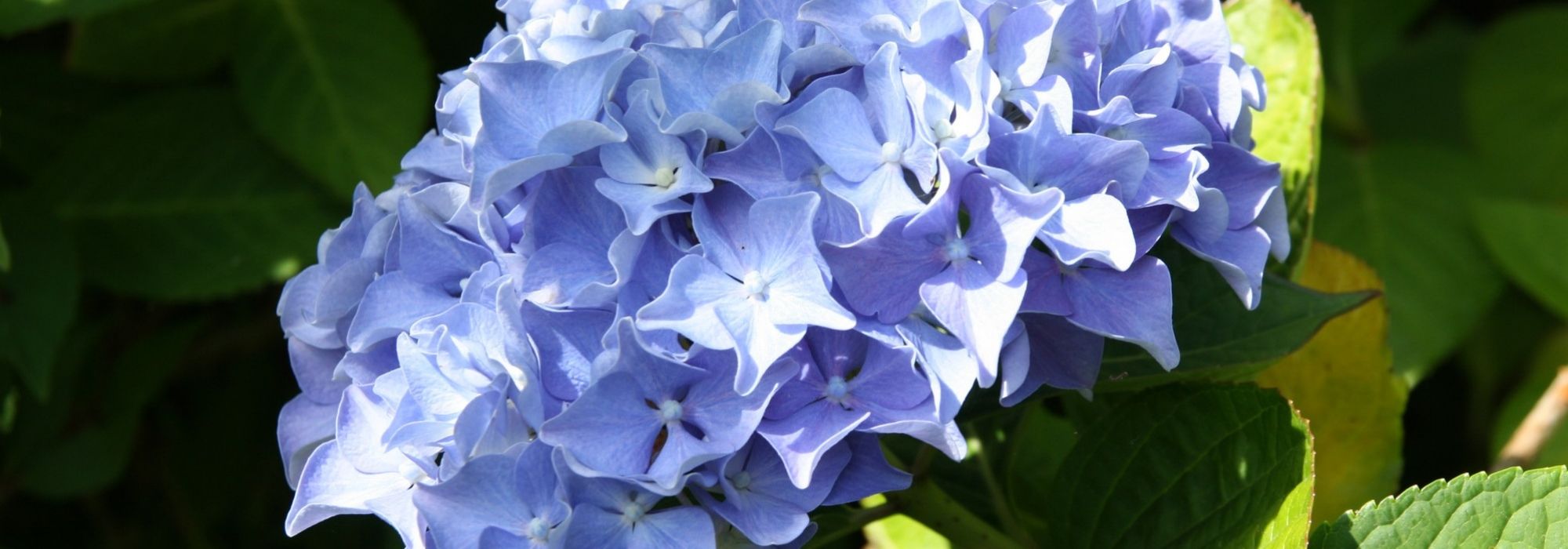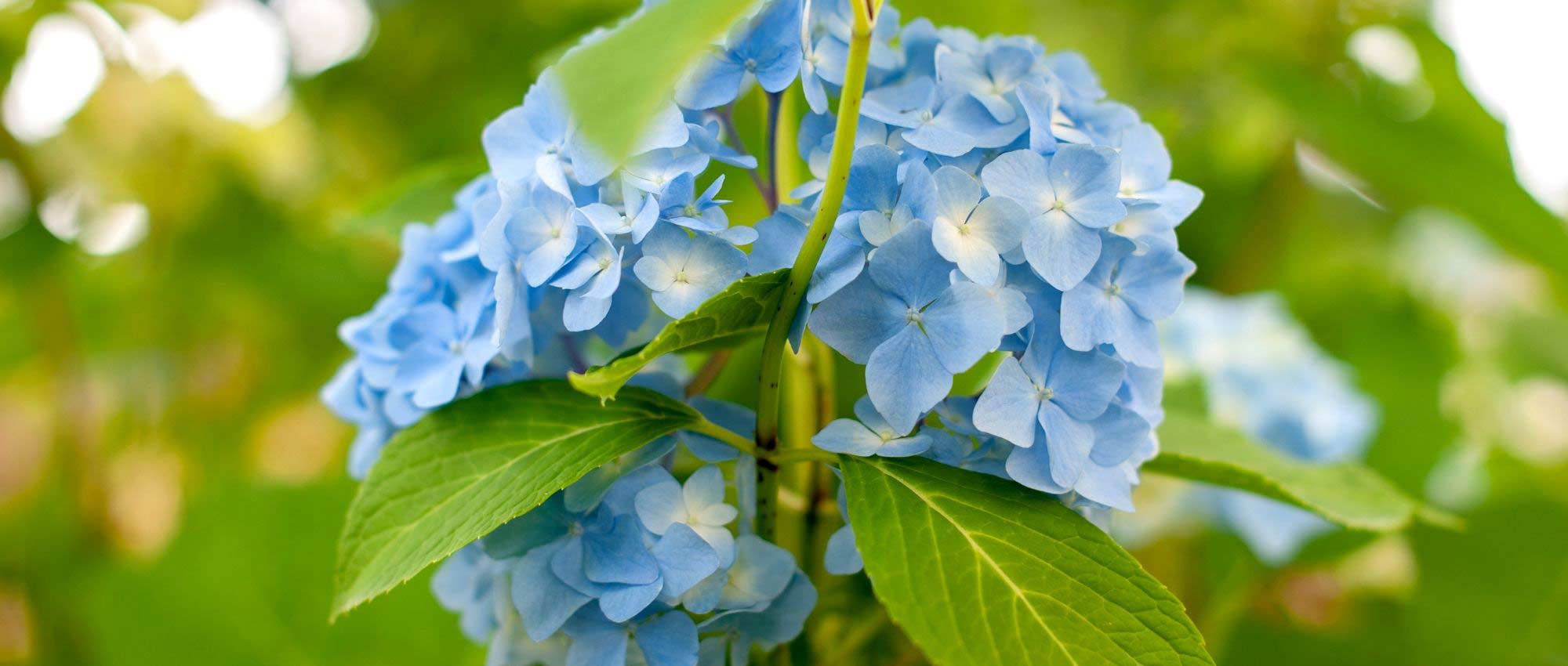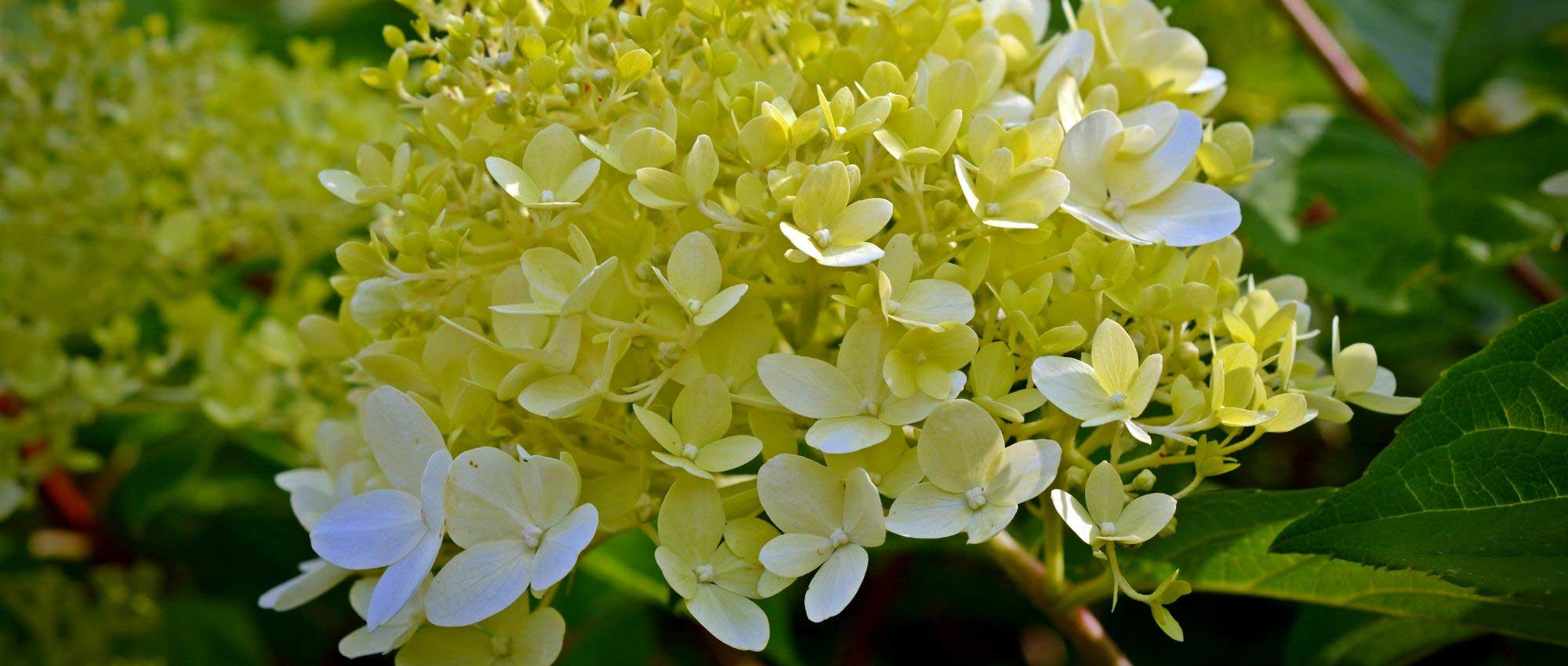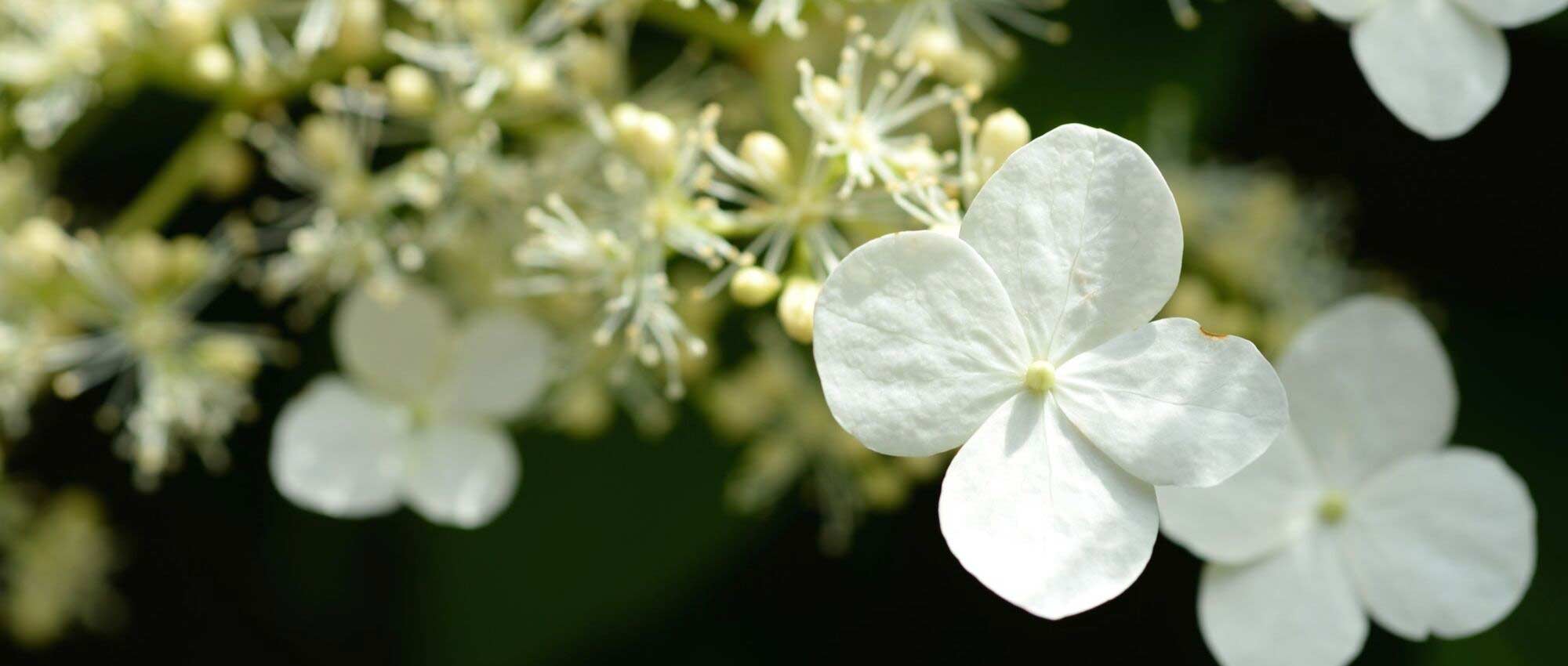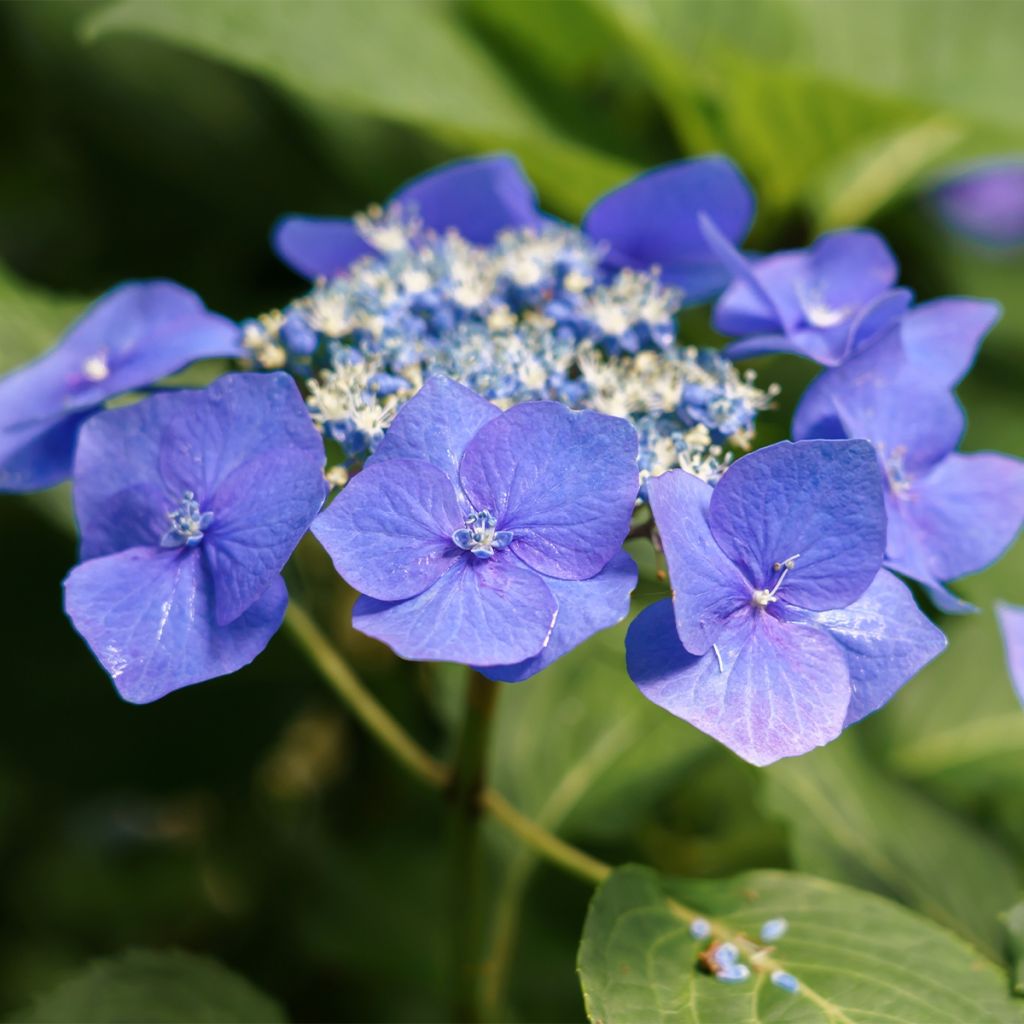

Hydrangea macrophylla Teller Blue
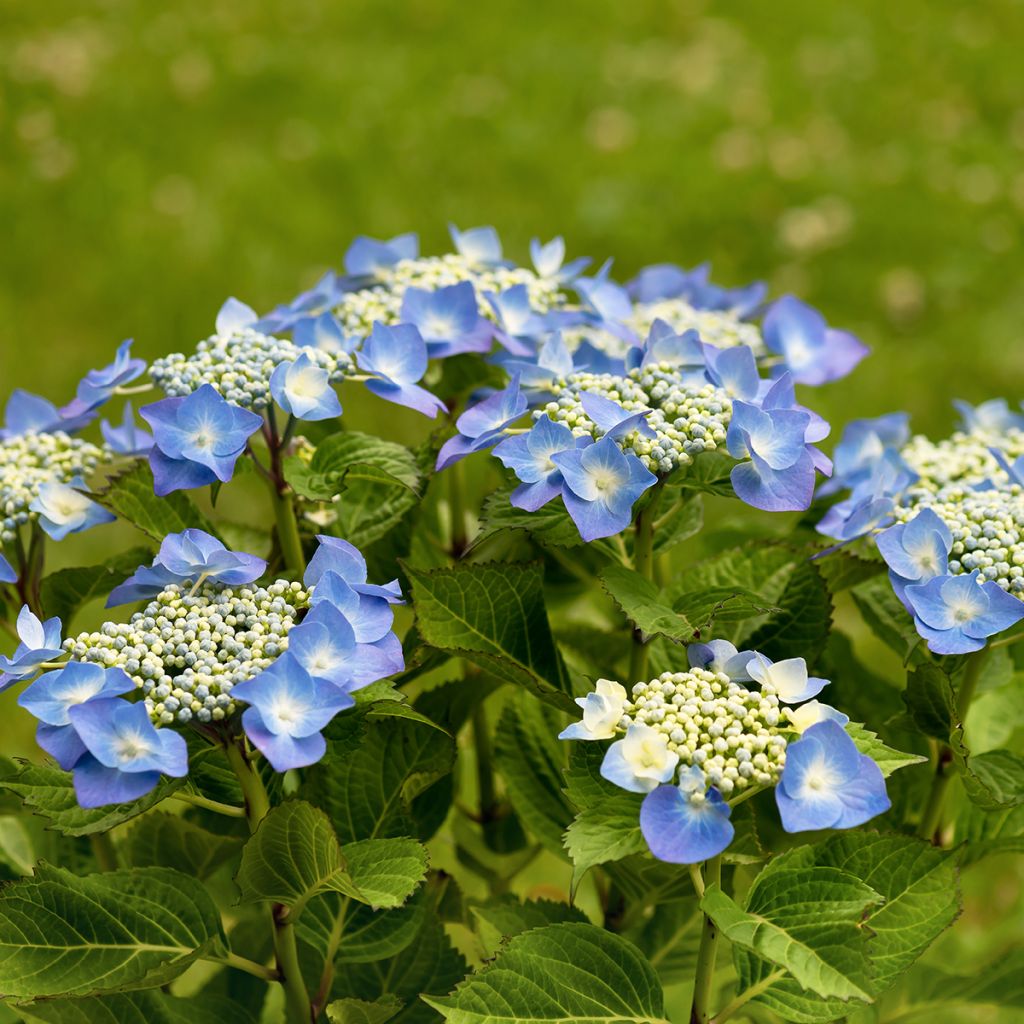

Hydrangea macrophylla Teller Blue
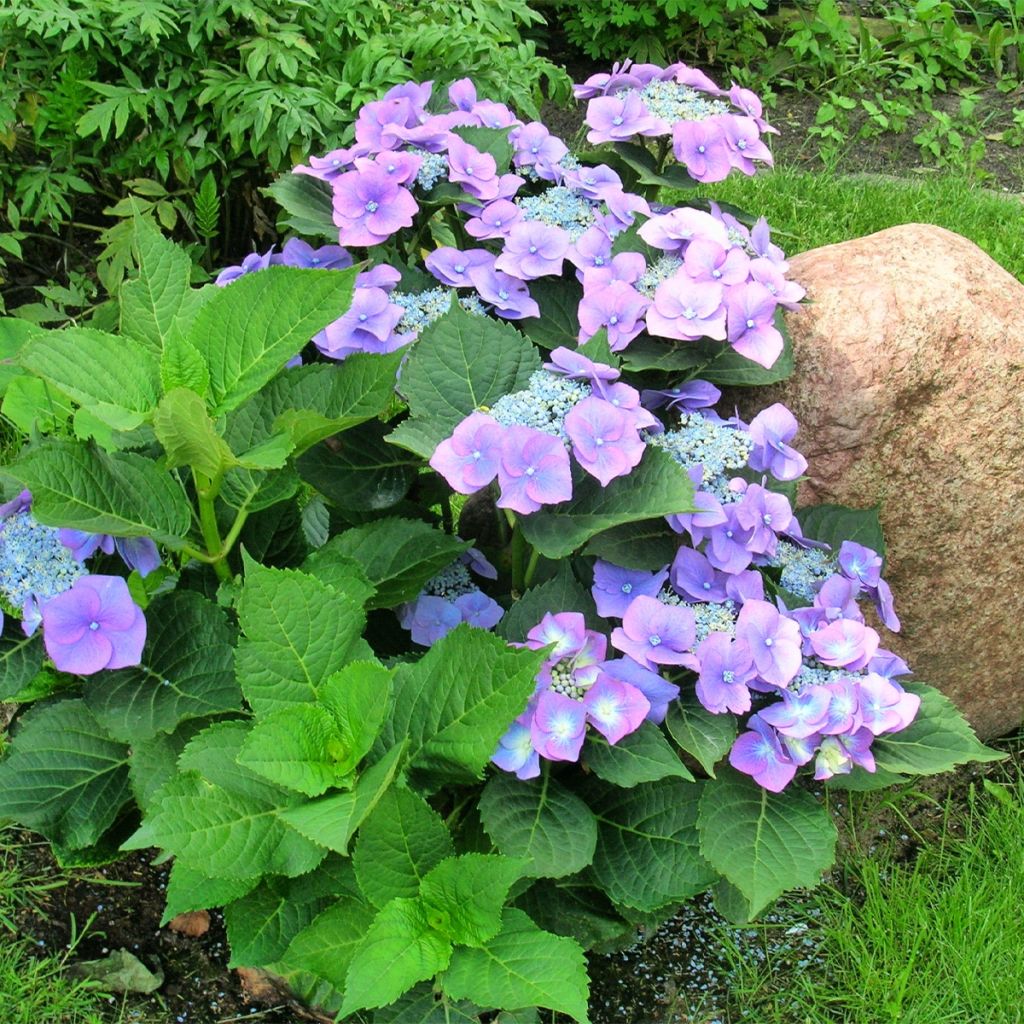

Hydrangea macrophylla Teller Blue
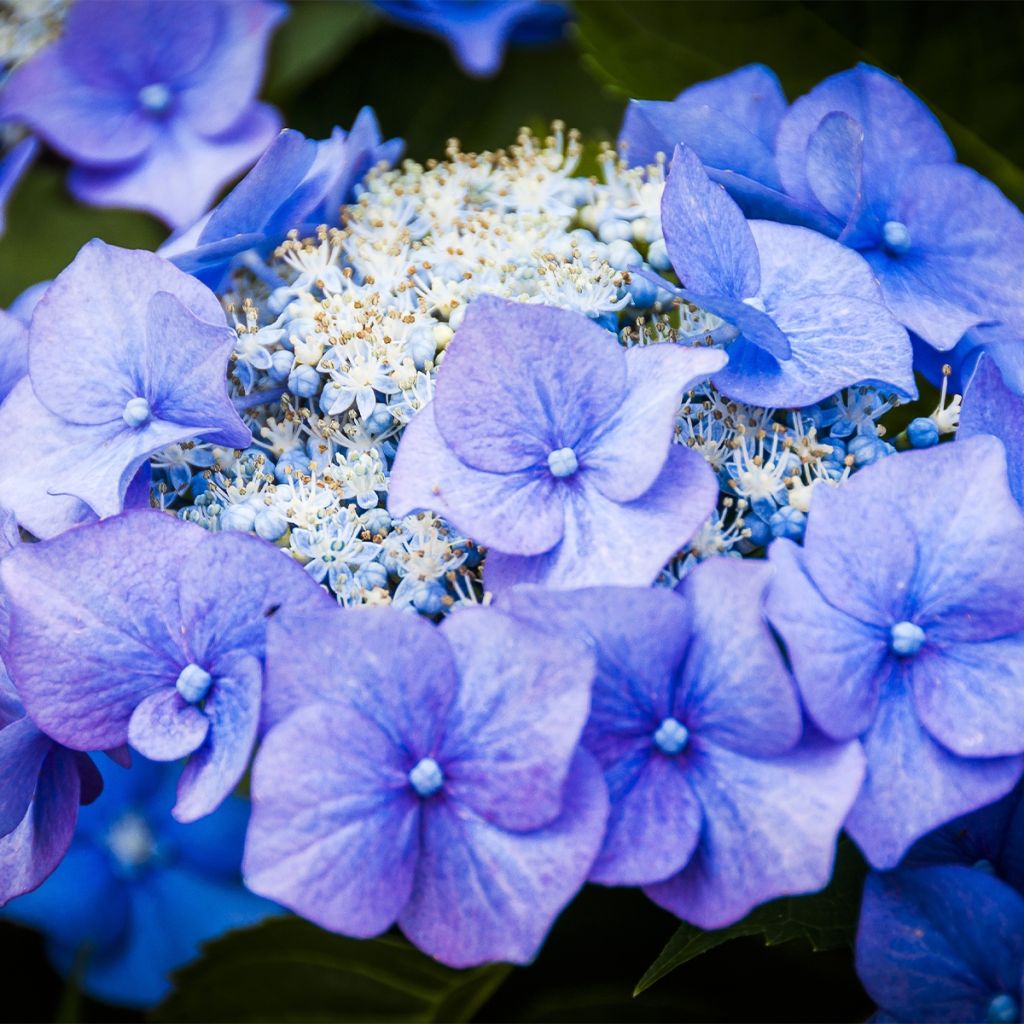

Hydrangea macrophylla Teller Blue
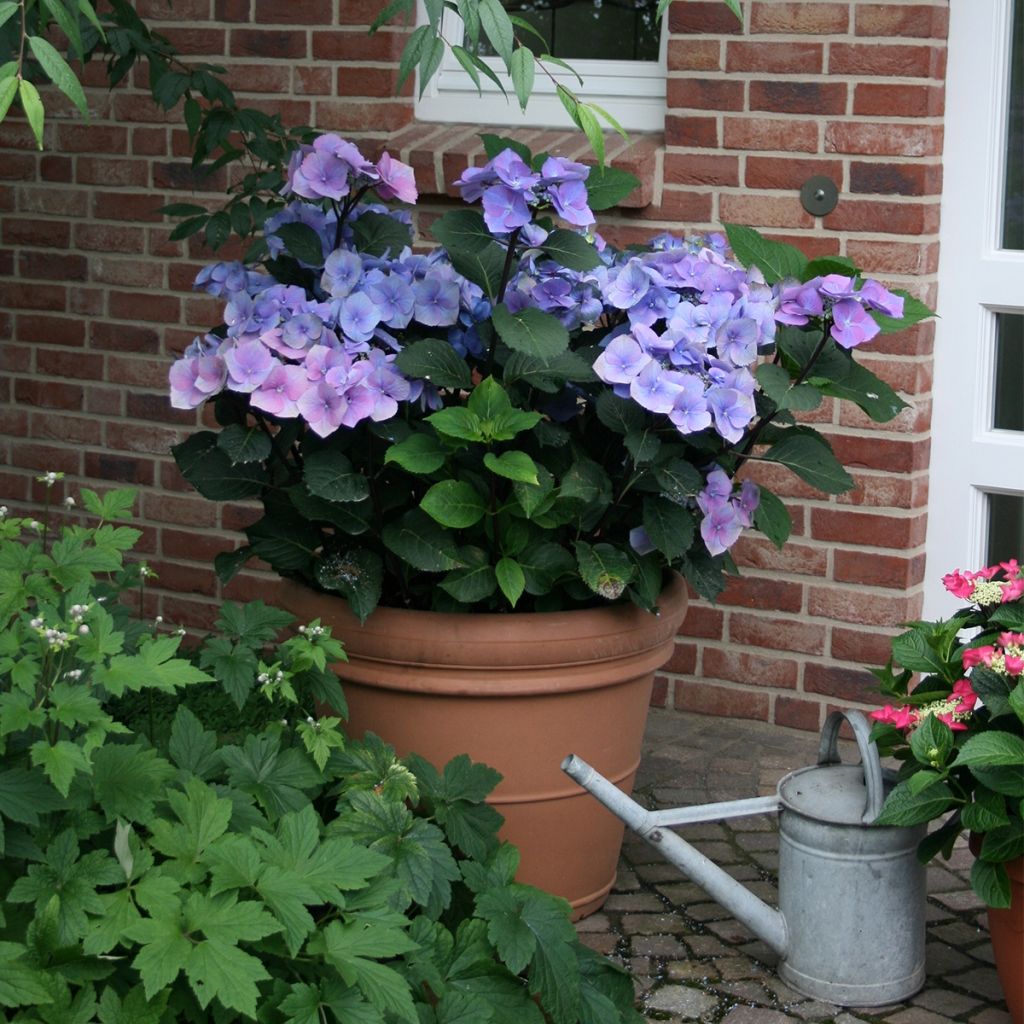

Hydrangea macrophylla Teller Blue
Hydrangea macrophylla Teller Blue
Hydrangea macrophylla Teller Blue
Bigleaf Hydrangea, French Hydrangea
Unfortunately, its flowers have just appeared and they are pink, yet I live in Brittany and I followed the instructions...
Ariane, 15/06/2024
Special offer!
Receive a €20 voucher for any order over €90 (excluding delivery costs, credit notes, and plastic-free options)!
1- Add your favorite plants to your cart.
2- Once you have reached €90, confirm your order (you can even choose the delivery date!).
3- As soon as your order is shipped, you will receive an email containing your voucher code, valid for 3 months (90 days).
Your voucher is unique and can only be used once, for any order with a minimum value of €20, excluding delivery costs.
Can be combined with other current offers, non-divisible and non-refundable.
Home or relay delivery (depending on size and destination)
Schedule delivery date,
and select date in basket
This plant carries a 24 months recovery warranty
More information
We guarantee the quality of our plants for a full growing cycle, and will replace at our expense any plant that fails to recover under normal climatic and planting conditions.
Does this plant fit my garden?
Set up your Plantfit profile →
Description
Hydrangea macrophylla 'Teller Blue' is a variety of hydrangea with relatively flat inflorescences, imaginatively nicknamed "Teller" by the Germans (which means "plate"). It is also known as "lace-cap". Its magnificent bright blue flowering appears for several weeks in summer. Of medium size, this beautiful and easy-to-grow bush will thrive in neutral to acidic soil and in semi-shaded areas, either as a standalone plant or in the heart of a mixed border. It can also be planted in a large container to decorate a terrace or a sun-sheltered entrance in the afternoon.
Hydrangea macrophylla is a deciduous bush native to Japan, where its beauty has been appreciated for centuries and mentioned in poems dating back to the 8th century! In a country that attaches great importance to plants, festivals are even dedicated to this bush. Hydrangeas belong to the Hydrangeaceae family, which they gave their name to, and which includes other ornamental genera. Among Hydrangea macrophylla, there are varieties with round heads and those with flat heads.
'Teller Blue' is a variety that produces beautiful blue inflorescences in acidic soil, but mauve-pink in neutral to slightly alkaline soil, of medium size (15 cm to 18 cm (5.9 in to 7.1 in) in diameter), and clearly visible against its medium green foliage. In summer, it flowers from July to September. Its inflorescences are composed of very narrow fertile flowers tightly packed in the centre, and larger sterile florets on the periphery, reminiscent of certain Viburnums. While truly blue flowers can be found in a number of perennial plants, such as the mythical Himalayan Blue Poppy, certain Campanulas, periwinkles or Lithodoras, this colour is much rarer in woody plants of our gardens. It always evokes certain emotions and justifies planting this hydrangea in acidic soil to fully enjoy its pure blue colour. It is a medium-sized bush, reaching approximately 1.5 m (4.9 ft) in height and 1.3 m to 1.6 m (4.3 ft to 5.2 ft) in width, with a growth rate of 15 cm to 25 cm (5.9 in to 9.8 in) per year. Like all Hydrangea macrophylla, this bush is not strictly an ericaceous plant, but it prefers neutral to acidic soils, while tolerating some limestone. It is quite hardy (-20° C (-4° F) or lower). Severe frost can damage the ends of the branches, but they easily regrow after pruning in spring. Easy to grow, it can live for a very long time.
'Teller Blue' surprises with its unique blue colour, reminiscent of precious porcelain. You can plant it as a standalone under the light shade of large trees, but it will also be valuable in mixed borders with plants that thrive in acidic soil. Choose plants with staggered flowering throughout the year to complement the flowering of this hydrangea. In a romantic setting, associate it with Daphne odora 'Aureomarginata' with its early flowering and unforgettable fragrance. The enchanting candy pink flowers of Magnolia 'Pink Beauty' will then take over, followed by the delicate bells of an Enkianthus, which will seamlessly transition with this hydrangea. And to end the year in beauty, a Camellia sasanqua with its fully open petals and bouquet of yellow stamens will be perfect.
Note: The colour of Hydrangea macrophylla flowers varies depending on the soil pH. Traditionally blue varieties turn pink in neutral or alkaline soil. To maintain a beautiful blue colour, mix ericaceous soil with your garden soil and apply aluminium sulphate (found in slate) or alum stone every spring.
Hydrangea macrophylla Teller Blue in pictures
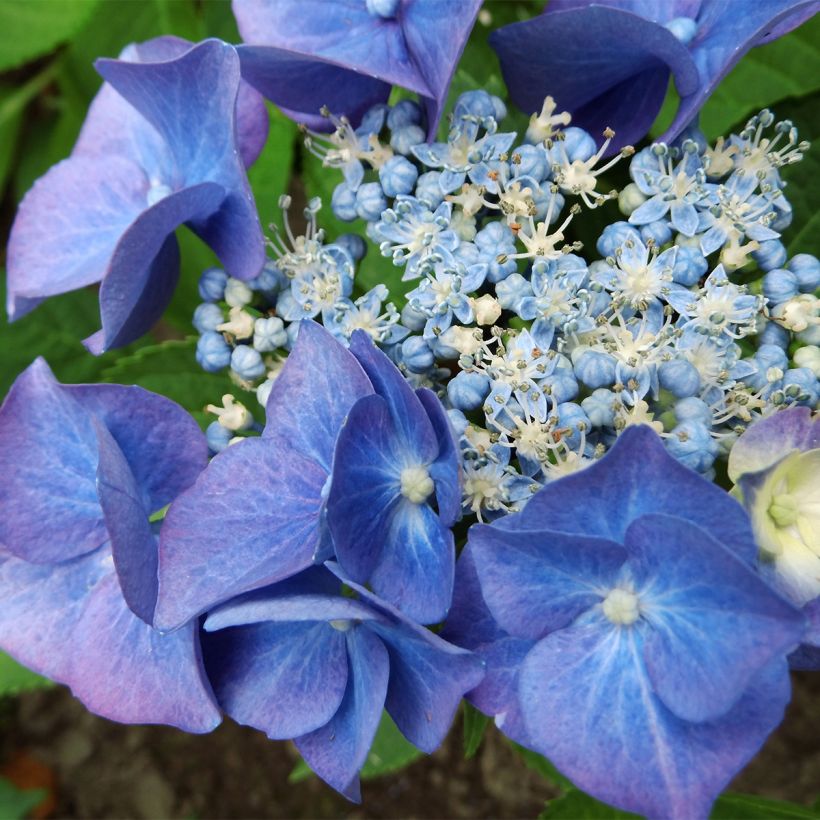

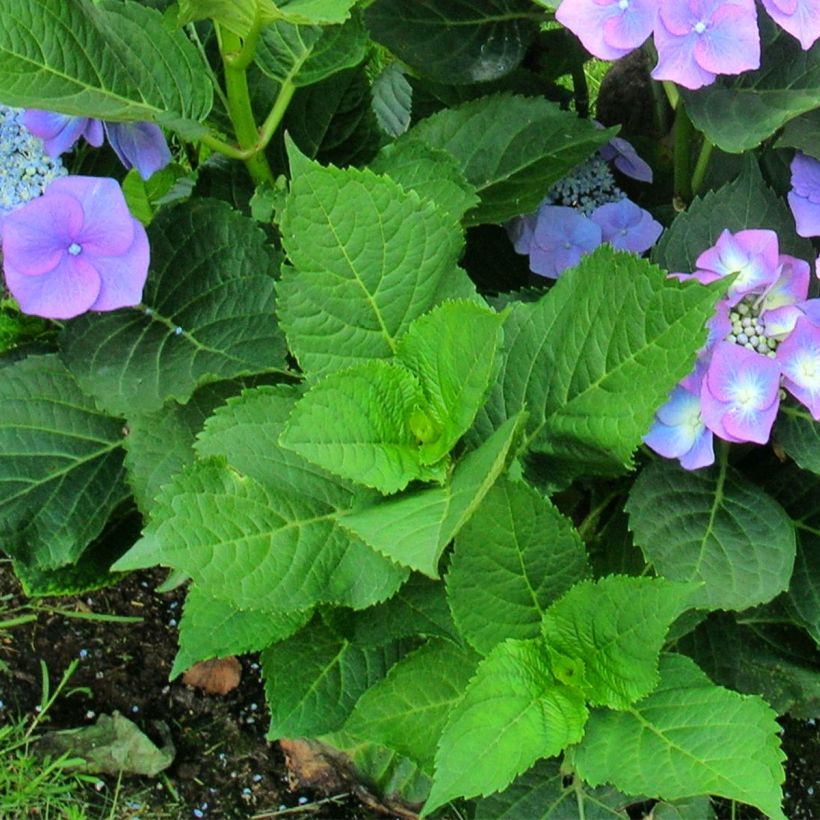

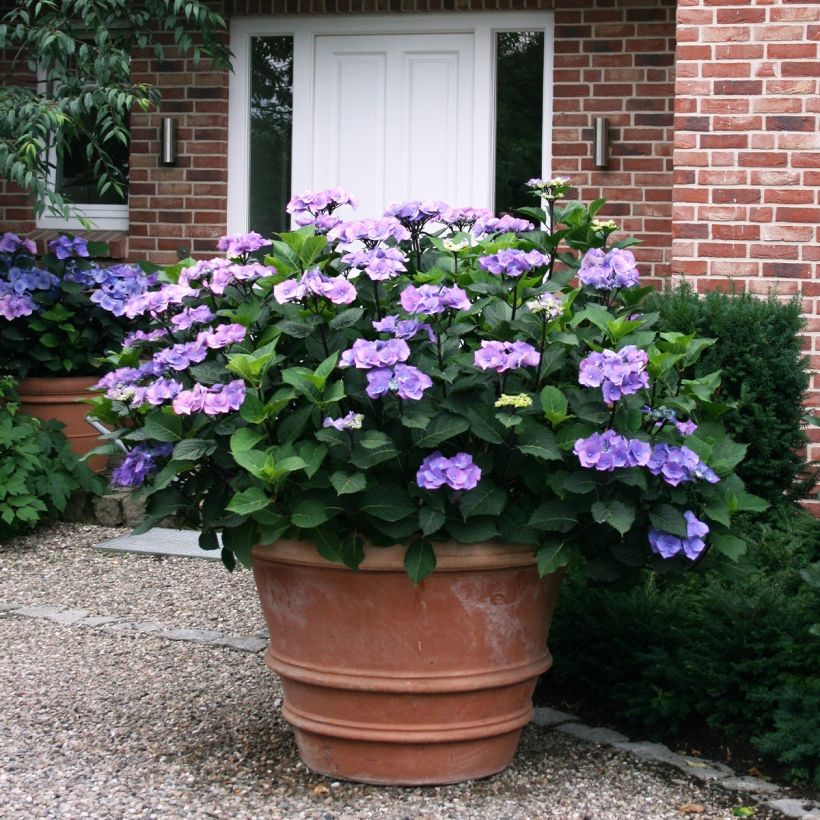

Plant habit
Flowering
Foliage
Botanical data
Hydrangea
macrophylla
Teller Blue
Hydrangeaceae
Bigleaf Hydrangea, French Hydrangea
Blaumeise, Teller Blaumeise
Cultivar or hybrid
Planting and care
Plant in spring or early autumn, preferably in a slightly shaded position, for example against an east-facing wall, or even north-facing. In very cold regions, it may be prudent to protect its stump with a thick mulch. Keep it sheltered from cold, drying winds. It does not necessarily require ericaceous soil, even tolerating some limestone, but it appreciates deep, moist, well-drained, and fairly fertile soil. In poor soil, enrich with a good base fertiliser before planting and mix the existing soil with a substrate containing some compost. In slightly alkaline (calcareous) soil, dig a hole 70 cm to 80 cm (27.6 in to 31.5 in) in all directions, mix the existing soil with 1/3 ericaceous soil and 1/3 compost.
If planting is done at the base of a protective wall and the soil is dry, place the root ball at least 30 cm to 40 cm (11.8 in to 15.7 in) away from it and incorporate a significant amount of well-decomposed compost to better retain moisture in the soil. After planting, beware of slugs, which are quite fond of young leaves. Very hardy, it can be planted in cold regions without fear. Water regularly in hot periods to prevent the foliage from wilting during dry spells.
Planting period
Intended location
Care
Planting & care advice
-
, onOrder confirmed
Reply from on Promesse de fleurs
Haven't found what you were looking for?
Hardiness is the lowest winter temperature a plant can endure without suffering serious damage or even dying. However, hardiness is affected by location (a sheltered area, such as a patio), protection (winter cover) and soil type (hardiness is improved by well-drained soil).

Photo Sharing Terms & Conditions
In order to encourage gardeners to interact and share their experiences, Promesse de fleurs offers various media enabling content to be uploaded onto its Site - in particular via the ‘Photo sharing’ module.
The User agrees to refrain from:
- Posting any content that is illegal, prejudicial, insulting, racist, inciteful to hatred, revisionist, contrary to public decency, that infringes on privacy or on the privacy rights of third parties, in particular the publicity rights of persons and goods, intellectual property rights, or the right to privacy.
- Submitting content on behalf of a third party;
- Impersonate the identity of a third party and/or publish any personal information about a third party;
In general, the User undertakes to refrain from any unethical behaviour.
All Content (in particular text, comments, files, images, photos, videos, creative works, etc.), which may be subject to property or intellectual property rights, image or other private rights, shall remain the property of the User, subject to the limited rights granted by the terms of the licence granted by Promesse de fleurs as stated below. Users are at liberty to publish or not to publish such Content on the Site, notably via the ‘Photo Sharing’ facility, and accept that this Content shall be made public and freely accessible, notably on the Internet.
Users further acknowledge, undertake to have ,and guarantee that they hold all necessary rights and permissions to publish such material on the Site, in particular with regard to the legislation in force pertaining to any privacy, property, intellectual property, image, or contractual rights, or rights of any other nature. By publishing such Content on the Site, Users acknowledge accepting full liability as publishers of the Content within the meaning of the law, and grant Promesse de fleurs, free of charge, an inclusive, worldwide licence for the said Content for the entire duration of its publication, including all reproduction, representation, up/downloading, displaying, performing, transmission, and storage rights.
Users also grant permission for their name to be linked to the Content and accept that this link may not always be made available.
By engaging in posting material, Users consent to their Content becoming automatically accessible on the Internet, in particular on other sites and/or blogs and/or web pages of the Promesse de fleurs site, including in particular social pages and the Promesse de fleurs catalogue.
Users may secure the removal of entrusted content free of charge by issuing a simple request via our contact form.
The flowering period indicated on our website applies to countries and regions located in USDA zone 8 (France, the United Kingdom, Ireland, the Netherlands, etc.)
It will vary according to where you live:
- In zones 9 to 10 (Italy, Spain, Greece, etc.), flowering will occur about 2 to 4 weeks earlier.
- In zones 6 to 7 (Germany, Poland, Slovenia, and lower mountainous regions), flowering will be delayed by 2 to 3 weeks.
- In zone 5 (Central Europe, Scandinavia), blooming will be delayed by 3 to 5 weeks.
In temperate climates, pruning of spring-flowering shrubs (forsythia, spireas, etc.) should be done just after flowering.
Pruning of summer-flowering shrubs (Indian Lilac, Perovskia, etc.) can be done in winter or spring.
In cold regions as well as with frost-sensitive plants, avoid pruning too early when severe frosts may still occur.
The planting period indicated on our website applies to countries and regions located in USDA zone 8 (France, United Kingdom, Ireland, Netherlands).
It will vary according to where you live:
- In Mediterranean zones (Marseille, Madrid, Milan, etc.), autumn and winter are the best planting periods.
- In continental zones (Strasbourg, Munich, Vienna, etc.), delay planting by 2 to 3 weeks in spring and bring it forward by 2 to 4 weeks in autumn.
- In mountainous regions (the Alps, Pyrenees, Carpathians, etc.), it is best to plant in late spring (May-June) or late summer (August-September).
The harvesting period indicated on our website applies to countries and regions in USDA zone 8 (France, England, Ireland, the Netherlands).
In colder areas (Scandinavia, Poland, Austria...) fruit and vegetable harvests are likely to be delayed by 3-4 weeks.
In warmer areas (Italy, Spain, Greece, etc.), harvesting will probably take place earlier, depending on weather conditions.
The sowing periods indicated on our website apply to countries and regions within USDA Zone 8 (France, UK, Ireland, Netherlands).
In colder areas (Scandinavia, Poland, Austria...), delay any outdoor sowing by 3-4 weeks, or sow under glass.
In warmer climes (Italy, Spain, Greece, etc.), bring outdoor sowing forward by a few weeks.






























